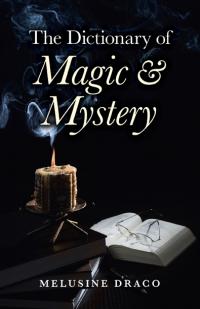
For the reasons of self-protection, we must be fully conversant with the nature of the energies we encounter on the astral levels. We need to differentiate between the individual god-power represented by Aphrodite (Greek), Venus (Roman), Hathor (Egyptian), Ishtar (Babylonian) or Astarte (Phoenician). In eclectic paganism, all these energies would be identified as having one source, i.e. the Goddess — which is why much of what passes for modern magic is often sterile.
To understand the true god-power emanating from each source, we have to understand what the indigenous peoples who worshipped them called upon, not what we read in dumbed-down, quasi-magical books. If we read genuine magical material from the Golden Dawn or Aleister Crowley, for example, we are instantly struck by the wealth of classical references in the texts. These were not scattered through the text at random; they were carefully controlled and contrived in order to produce the maximum effect in a particular working.
It may also come as a surprise to learn that myth, folklore and legend are now recognized as a vital part of the development of the human race, rather than just a confused jumble of ancient cultural stories. Myths that might, at first glance, seem merely products of fancy are very far from being merely fanciful, and are the means by which ancient peoples expressed their fundamental notions of life and nature. These enduring myths are the actual methods by which they expressed certain ways of viewing the ‘rules’ of life, and which were brought into existence by the manner in which life was regulated in their society. The myths reflect the morality according to the lights of their time.
When we talk about the ‘mythology of Egypt’ for example, we are referring to the whole body of Egypt divine, heroic and cosmogonic legends, together with the various attempts that have been made to explain these ancient narratives for the benefit of modern thinking. The real function of these myths, however, was to strengthen the existing tradition and endow it with a greater value and prestige by tracing it back to a higher, more ‘supernatural’ reality of ancient events. What men have thought throughout history about the supernatural is important not only for what it may tell us about the Mysteries of life and death as the ancients viewed it, but for what it tells us about human beings today. If nothing else, it shows what we have lost!
Very early in the history of conscious thought, the priesthood awoke to the reality that their religious stories (i.e. those that concealed the Mysteries) were much in need of public explanation. As a result, popular versions took over and the esoteric became exoteric. The myths of civilized peoples: the Aryans of India, the Celts, the Egyptians and the Greeks thus contained two elements: the rational and what to modern minds sees the irrational. The rational myths were those that represented the gods as beautiful and wise; but the real difficulties presented by mythology spring from the irrational elements, which to modern minds appear unnatural, senseless or even, at times, repellent.
It is to these irrational elements that the magician must turn if he wishes to reconnect with the ancient Mysteries, which still lie at the very heart of the Great Work. For the true seeker, the great classic myths remain ‘true’ stories; not because we think they really happened but because they contain certain ‘universal truths’ about humanity and life. Truths which cannot be translated
into plain statement.
Extract from The Dictionary of Magic & Mystery, complied by Melusine Draco and published by Moon Books. ISBN 978 1 84694 462 8 : 370pp : UK£12.99/US$11.95 on in e-book format. www.moon-books.net

 RSS Feed
RSS Feed